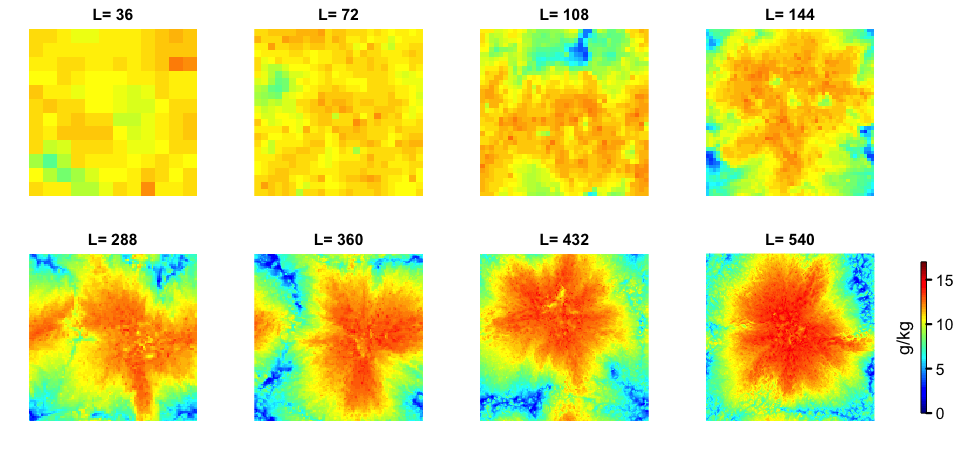Jeevanjee and Romps, Convective self-aggregation, cold pools, and domain size, GRL, 2013
Paper
Description
Convective self-aggregation refers to a phenomenon in cloud-resolving simulations wherein the atmosphere spontaneously develops a circulation with a convecting moist patch and a non-convecting dry patch. All previous studies have found a sharp transition to aggregated convection when the domain size exceeds a critical threshold, typically in the range of 200-300 km. Here, we show that cold pools are responsible for this sharp transition. When cold pools are inhibited, self-aggregation occurs at all domain sizes.
With cold pools inhibited, the aggregation strength decreases smoothly as the domain size L is decreased below about 200-300 km. A streamfunction analysis reveals two distinct sources for the air subsiding into the dry-patch boundary layer: a moist, shallow circulation and a dry, deep circulation. The deep circulation scales with L, whereas the shallow circulation does not. At small L, the shallow circulation dominates, thereby weakening the aggregation.
Horizontal distribution of specific humidity at 500 m for various domain sizes with cold pools inhibited. Note that aggregation exists at all domain sizes; a smooth increase in the strength of aggregation occurs in the vicinity of L = 100 km.
